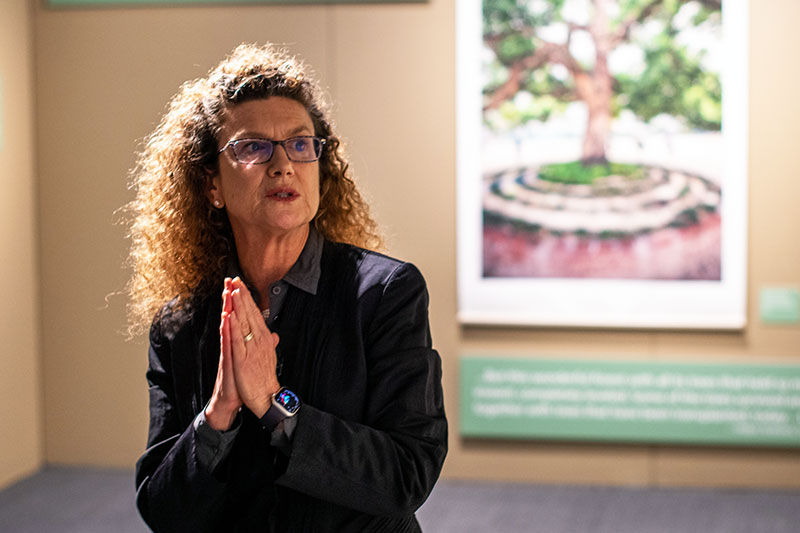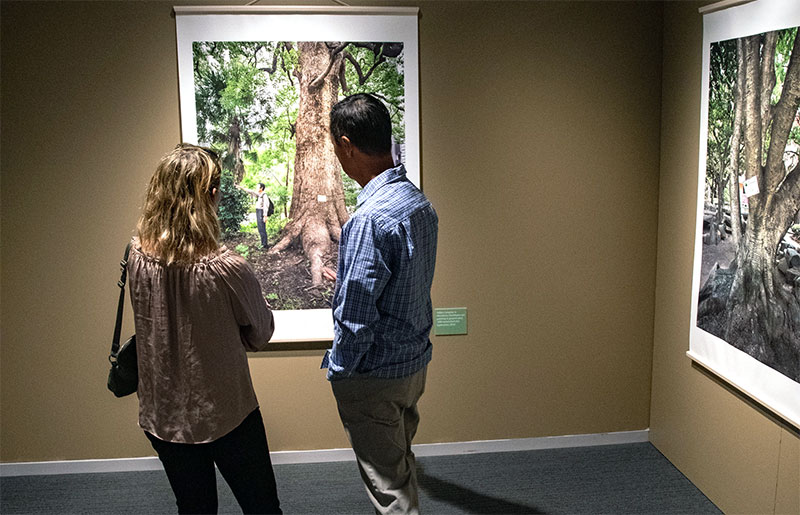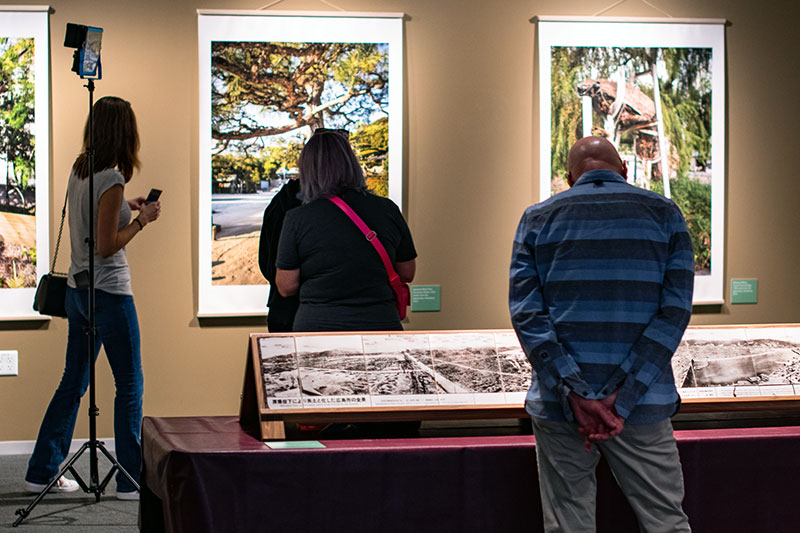Sponsored Content

Before Katy McCormick accompanied her husband on a 2008 Japan trip to examine collections of survivor images and stories from the World War II atomic bombings, she’d been working on a project photographing the monuments and landscaping on the Washington Mall.
“We went to a commemoration in the Peace Park in Hiroshima, and I was really struck by all of the museums and monuments dedicated to peace,” McCormick recalls. “It was kind of a contrast with the war memorials in Washington; a very interesting conjuncture.”
Captivated by a new perspective on the atomic bombs the U.S. dropped on Hiroshima and Nagasaki, McCormick spent the next few days wandering around in Hiroshima—a decision that would shape the prospects of her photography career—which you can learn more about on your next visit to the Harry S. Truman Presidential Library and Museum.
“I came upon this amazing tree in a touristy area near Hiroshima Castle,” she says. “There was a eucalyptus tree that was very strange—very large, very contorted, very twisted. It was unlike any eucalyptus tree I’d seen before, so I looked closely at it and there was a tag on it that said, ‘a bomb tree, 707 meters from the hypocenter,’ which is a reference to ground zero. That immediately just blew me away. This tree had withstood this horrendous, catastrophic moment in history, and it’s alive, it’s thriving.”
Over the next few days, McCormick found several trees with similar tags noting that they had survived the atomic bombing, and she knew then she would one day return to Japan to photograph as many of the surviving trees, or hibakujumoku, she could find in Hiroshima and Nagasaki.

The Decision to Drop the Bomb
The atomic bombings that led to the end of World War II remain one of President Truman’s most controversial decisions while in office. After the blasts killed over 100,000 Japanese civilians, Japan surrendered to the U.S.
“I think what’s been most important to me is the folks I have encountered in Japan spend very little time or energy cursing the bomb or the decision and rather urgently focus on never having that happen to anyone else again,” McCormick says. Between 2013 and 2018, she returned to Japan four times to capture images of the A-bomb trees.
McCormick has photographed survivor trees among school yards, temple grounds, and city squares, where they stand as living memorials of the bombings. The project ultimately led to her connecting with Clifton Truman Daniel, President Truman’s oldest grandson and honorary chairman of the Truman Library Institute.
“To me, the trees represent resiliency and new life in the wake of horrific tragedy,” says Daniel. “This unique exhibit will give visitors a chance to pause and reflect on the impact of war and the importance of reconciliation.”

Rooted Among the Ashes
Until October 1, general admission tickets to the Truman Library & Museum will also grant visitors access to McCormick’s photographic collection Rooted Among the Ashes: Hibakujumoku/A-Bombed Trees.
Displayed in a traditional Japanese manner, the photographs are presented on bamboo prints reminiscent of scrolls. Unprotected by glass or frames, the images will move and sway as people walk past.
McCormick encourages patrons to take in the atmosphere of the exhibition—the soundscape modeled to reflect Hiroshima and Nagasaki, complementing photographic images, videos with alternative views of the trees, and testimonials that provide a sense of what it was like to live through the bombings.
“I experienced these trees in a very powerful way because I was standing before them. I could reach out and touch them,” McCormick says. “But how can we get close to that in a print? I wanted to put the viewer in relation to the print so they understand the necessary care and the vulnerability that is present. When you don’t have glass in front of large photographs, one is more likely to feel immersed and be part of it.”
Before embarking on her photographic journey, McCormick hadn’t spent much time thinking about how the bombings impacted the people who lived in Hiroshima and Nagasaki. She hopes the exhibition challenges visitors to think about the consequences of conflict, the importance of pain, and the fragility of life.
“The exhibition really emphasizes the beauty of hope, the sustained survivorship of people who underwent this terrible thing—the Japanese certainly were not innocent in that war, but the civilians who died were like sacrificial lambs,” McCormick says. “I want the exhibition to be a place of reflection, of seeing history in a different way—not only in a negative light but also in a light in which people who are survivors today say never again.”
Get tickets to visit the Truman Library and Museum at NewTruman.org, where you can sign-up for more event and exhibit news.

